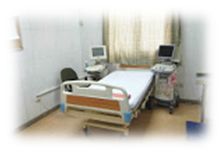Case Quiz (July 2021)
A 12-year-old boy, born to healthy non-consanguineous parents, at term and without perinatal complications, was evaluated for uncontrolled seizures. He displayed generalized motor seizures at 5 months of age, eventually controlled by anticonvulsants. He showed developmental delay with head control at 6 months and ambulation at 23 months with a broad-based unsteady gait. He was diagnosed with ataxic cerebral palsy. In addition, he displayed a delay in speech and generalized learning difficulties at school.
At 7 years of age, he developed some muscle weakness and tetanic convulsions. Evaluation of the patient at that time revealed tubulopathy hypokalemia, metabolic alkalosis, polyuria and normal serum calcium and magnesium. Bartter syndrome was erroneously diagnosed at first. The patient received treatment with potassium gluconate, spironolactone and indomethacin.
At 9 years of age, the patient developed some hearing difficulties. ENT consultation revealed bilateral sensorineural hearing loss and a hearing aid was used. The explanation of his hearing loss at that time was attributed to medications but none of his medications was stopped.
He presented to our hospital with infrequent secondarily generalized focal motor seizures unresponsive to several medication changes. He was a pleasant, cooperative teenager with mild intellectual disability and normal cranial nerve examination (II–XII), normal muscle strength in the upper and lower extremities, mild spastic hypertonia in the lower limbs, increased deep tendon reflexes and bilateral Babinski signs. There was mildly decreased superficial sensation in the lower extremities and no disturbance of position sensation or vibration. Romberg sign was absent. His gait was broad based and slow and he was unable to walk in tandem. Examination for cerebellar signs revealed the absence of tremor and dysmetria, while rapid alternating movements were slow and uncoordinated, resulting in dysdiadochokinesis.
Wakefulness and sleep electroencephalogram (EEG) showed slow background rhythms and no epileptiform activity. Brain computed tomography (CT) and MRI were normal. Laboratory tests showed normal serum vitamin E, B12, folic acid and plasma very-long-chain fatty acid (VLCFA).
The patient’s epilepsy was fully controlled with topiramate and carbamazepine. The ataxia remained stable, as was the spasticity, with independent home ambulation and need for support in the community.
Diagnostic test was done
Case Answer (July 2021)
EASTsyndrome (Epilepsy, ataxia, sensorineural deafness, tubulopathy syndrome) is an AR disorder characterized by KCNJ10 gene mutations.
This disorder is charcterized by ataxia, developmental delay and epileptic seizures, in association with renal tubulopathy, sensorineural deafness and hypokalemichypomagnesemic metabolic alkalosis.
KCNJ10 (potassium channel, inwardly rectifying subfamily J, member 10),encodes the Kir4.1 potassium channel. KCNJ10 is expressed in the renal distal convoluted tubule, cochlear stria vascularis, brain glial cells and other tissues.
EAST syndrome should be considered in patients with renal tubular disorders in association with developmental delay, ataxia, epilepsy and sensorineural deafness.
